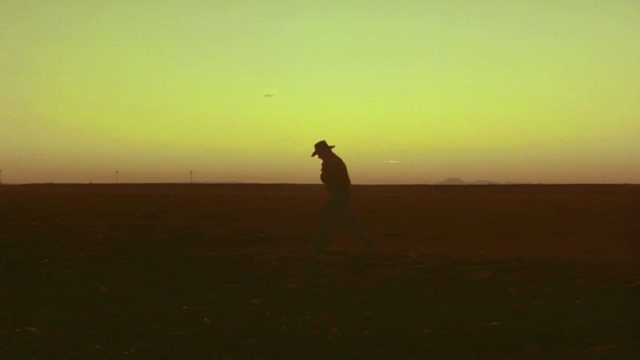On the last day of 1986, Variety reviewed the second feature film by Kathryn Bigelow, who “has undoubtedly created the most hard-edged, violent actioner ever directed by an American woman.” Near Dark is certainly hard-edged and violent; it makes its more commercially successful contemporary, The Lost Boys, look cartoonish and slight in contrast (but still a lot of fun). Bigelow has a hell of a gift for an action scene, even this early in her career, and her background in fine art shows in every frame, whether it’s Adrian Pasdar’s cowboy looking out at the stars with vampire drifter Jenny Wright or the justly famous motel shootout, where every shaft of sunlight piercing a motel room’s walls could mean fire and death.
Near Dark is the story of a cowboy who meets the wrong girl on the wrong night. “The light that’s leaving that star right now will take a billion years to get down here,” she tells him. “You want to know why you’ve never met a girl like me before?…Because I’ll still be here when the light from that star gets down here to earth in a billion years.”
One bite, and Pasdar is brought into another world; darker, rougher, populated with men who fought in the Civil War and lost and children who never grow old and are really, really angry about it. The found family Mae belongs to is brought together more by mutual need and desperation than love, and their existence seems poor, marginal, and hungry. When they feed, it’s brutal and cruel, not glamorous. (The excellent Tangerine Dream score makes everything feel more rough-edged and precarious.)
Pasdar’s father wants his son back, and when Joshua John Miller sees Pasdar’s little sister, he decides that just like Mae, he wants a vampire companion of his own. Like The Lost Boys at its best, Near Dark is in part about what “family” means and the strength people draw from the human connections they make. Near Dark quickly sets the stage for a classic standoff between two families, light and dark, and that’s exactly what Bigelow delivers. Her camera sees the rough beauty in the nightmare world of the vampires, but it also doesn’t hesitate to show why the light remains compelling. When, at the end, Mae steps back into the light, it may not feel fully earned, but it still feels like a victory.
When I originally wrote about this movie in 2019, Near Dark was out of print and not available to stream. I’m pleased to note that it is in print and streamable off and on as of this writing.
Stray Observations:
Bigelow originally wanted to make a revisionist Western, and Near Dark still remains as much Western as vampire movie, one where the former Confederate soldier is an unrepentant villain and the cowboy is mixed-race. (Remember when Adrian Pasdar was known for this movie and Heroes, rather than as the “Gaslighter” guy?)
Most reviews note that the vampire “family” contains three cast members who’d worked closely together on Aliens; that would still hold if the casting had gone differently, since Michael Biehn almost took Henriksen’s role.
Another member of the “family,” go-to ‘80s creepy kid Joshua John Miller, now writes for TV and film, including the script for The Final Girls.


